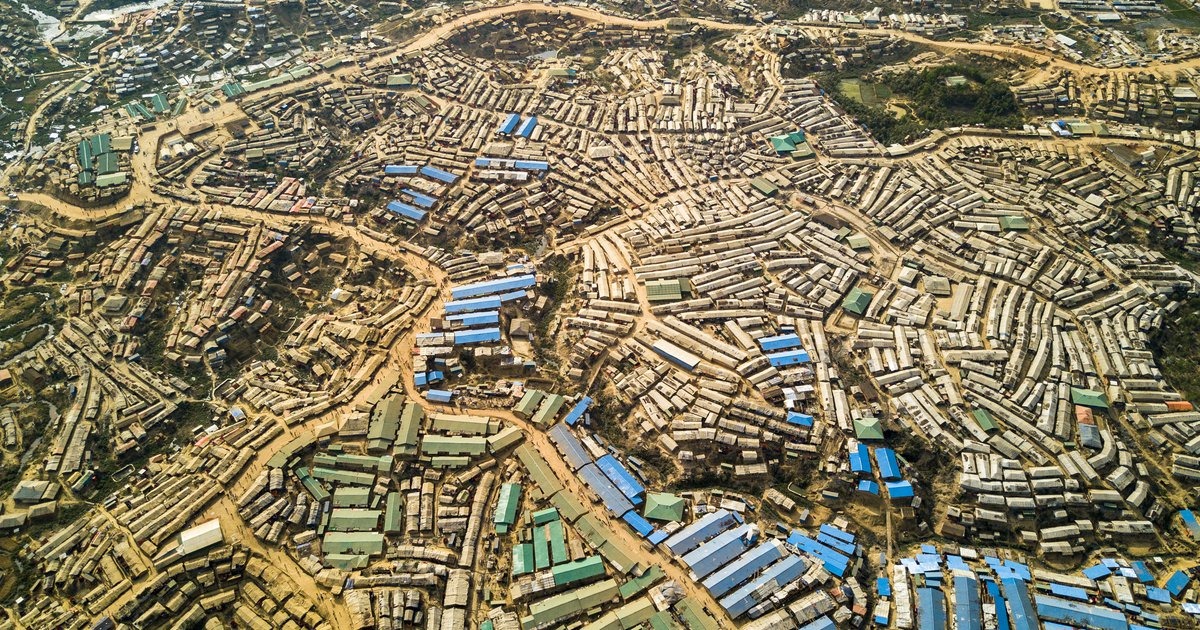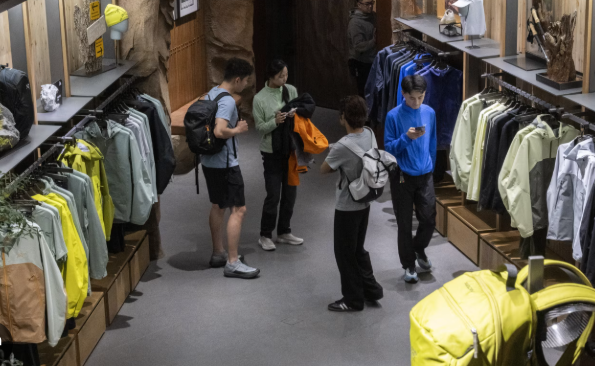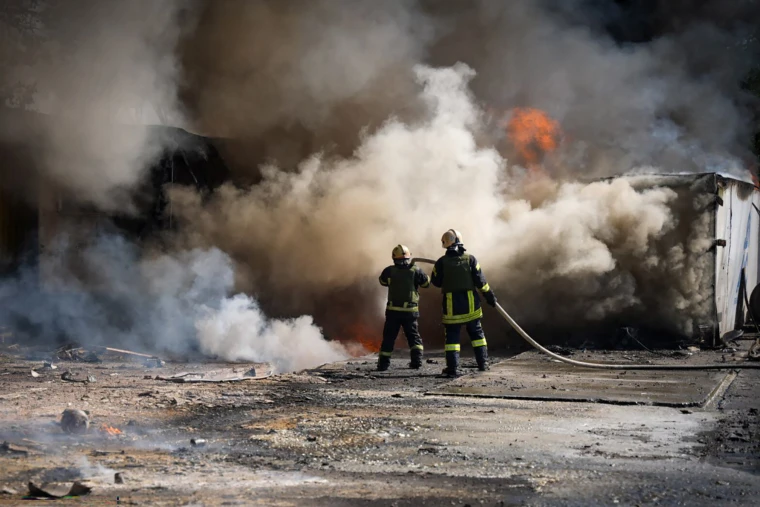Cox’s Bazar: High on Tourists and High on Never-Ending Lifelines

Eight years on from 2017, Cox’s Bazar runs on routine, not alarms. What began as emergency tents now resembles a managed district, held together by aid and adaptation. As of 22 October 2025, new arrivals continue: about 4,500 people were biometrically identified in September, bringing the 2025 total to roughly 133,000. Organized repatriation remains at zero; attempts in 2018 and 2019 produced no departures. Only small, spontaneous returns — around 82 people in May 2025 — have been recorded, and they did not constitute a formal program.
The Coastal Economy
Development inside the camps narrows or widens with donor cycles but never stops. On both sides of the fences, prices move with an already unstable economy — Bangladesh’s inflation sits at 8.36 percent — and with seasonal bans on key livelihoods like hilsa fishing along the coast.
Most work for the coastal poor is seasonal by design: tourism, construction, and fisheries. Festivals fill hotels and buses; wages lift for a week, then settle again. October halts the coast for hilsa. Twenty-two days off the water pushes crews toward transport, markets, and odd jobs. The pause is expected. The number of families tied to it is not.
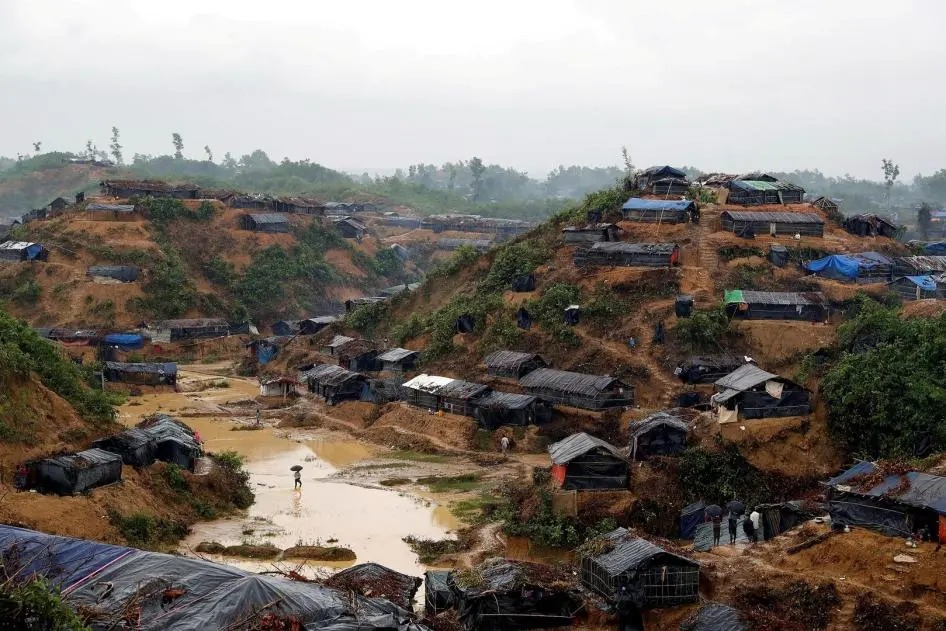
Food assistance is the third lever. When rations fall, Rohingya households seek more day work, and host-side labour feels the spillover. When rations stabilise, pressure eases on both sides. Small money, large effect. It appears first at tea stalls and rickshaw stands before it appears in any dataset. In early October, US$3.4 million (≈ Tk 41.4 crore) in new WFP support for refugees and nearby hosts acted as another quiet stabiliser — a modest top-up that keeps local spending from breaking.
Groceries carry the story. Rice bands in early October sat around Tk 55–65/kg (coarse) and Tk 75–85/kg (fine). Families substitute: cheaper rice, less fish, more lentils. The coastal basket clears, but only with discipline. Fish, the equaliser, is not relief this season. Catching costs rose; transport added its own layer. Margins thinned along the chain. Wages did not chase these moves. The gap is visible at the bazar before it shows in any CPI line.
Fuel shocks are lower than 2022–23, but the frame remains. Operators price routes for the new normal. Goods still move; margins do not recover. The pattern is simple: wages rise briefly with festivals or donor infusions, then slide back beneath prices.
Services and the Protracted State
Call it what it is: Cox’s Bazar sits in a protracted state. Officials rarely say it aloud, but the operation does. The Health Sector labels the response a “Protracted Grade 2 Emergency,” and the 2025–26 Joint Response Plan was built as a two-year plan. By UNHCR’s rule-of-thumb, a crisis becomes protracted once more than 25,000 people remain in exile for five years or more — a threshold Bangladesh crossed long ago. In practice, it means multi-year budgets, maintenance over launches, service baselines for every refugee, and incremental host-area upgrades. The job is continuity, not exit.
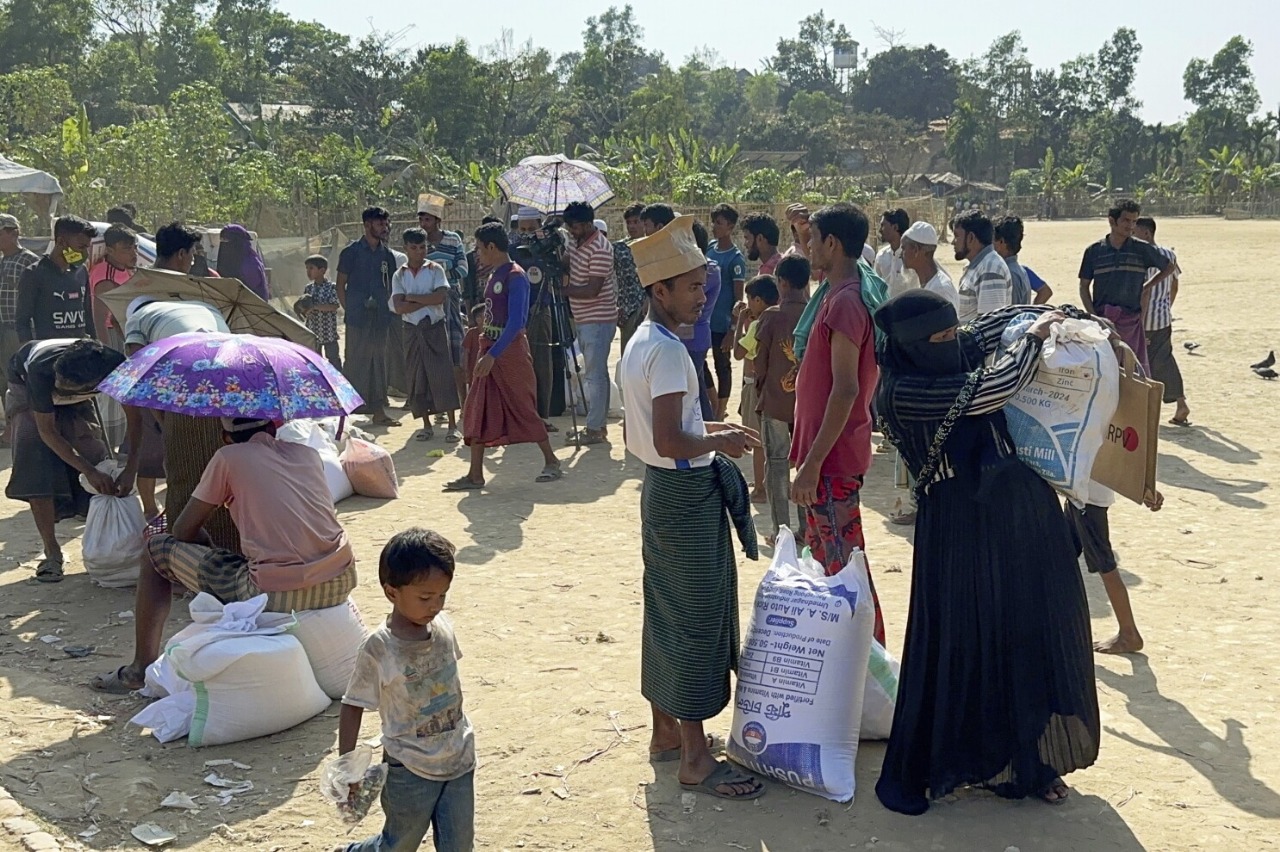
A protracted crisis moves in small steps, not big projects. One plant. One ward line. One drain. Cox’s Bazar just added a plastic-recycling facility — not a headline fix, but a useful one: cleaner canals and wetlands, a few dozen steady jobs, and shared use for locals and refugees. This is how a long crisis is managed: small, durable pieces.
The money behind it is development finance. It pays for what never makes posters: pipes, solid waste, ward taps, minor repairs. Procurement stays active so small contractors keep working. Rule of thumb: continuity, not scale.
Coverage flips the map. In the camps, the health baseline targets everyone for primary care and medicines. In the host unions, coverage is partial. WASH tells the same story: camp latrines are near-universal; many host wards are uneven. Net effect: less cash and calories in camps, more reliable clinics and sanitation. That isn’t politics; it’s design. In a protracted state, systems are built first where pressure is highest.
This is what long crises do: they create parallel reliability in the hot zone and leave adjacent gaps where budgets are thinner. The host-side feeling—“they get more”—comes from daily experience with clinics, latrines, waste trucks, not from a spreadsheet.
Overlap at the Bazar Level
Beyond the aid spreadsheets, the real meeting point is commerce.
Two economies drive the district:
-
the host/tourism cash economy — hotels, eateries, beach retail, transport, fisheries, construction; and
-
the aid-driven camp economy — WFP e-vouchers, NGO/UN payrolls, WASH contracts, and camp shops tied to voucher redemptions.
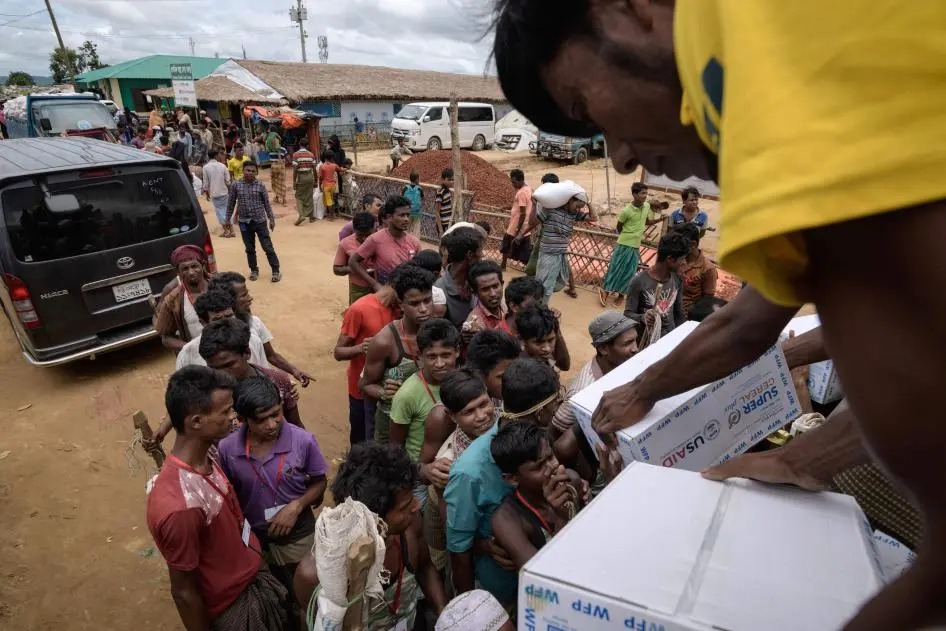
They meet in small trade. When aid dips, camp households sell a bit more, work a bit more, walk farther to buy cheaper. When aid stabilises, tea stalls, rickshaws, and small shops hold their lines. There is no single lever. The lever is volume — a million small transactions that keep the district’s baseline alive in a protracted state.
From “Systems and Patterns” to a Self-Sustaining Order
In 2018, I wrote that “systems and patterns are emerging in the Rohingya camps.” It was not prediction, just observation. Queues became grids. Barter became small trade. Volunteer lists turned into operating rosters. Order formed inside crisis. Humanitarian management created its own micro-governance: block leaders, food queues timed by section, informal policing that worked where state law barely reached.
Seven years later, those systems extend beyond the fences. What began as emergency logistics has matured into a functioning sub-economy. Camp markets run on WFP e-vouchers and small cash swaps. Host-side traders supply the vegetables, fish, and rice. Humanitarian payrolls circulate through rickshaw fares, phone shops, and mobile-money agents. The camps no longer sit outside the district — they feed into it.
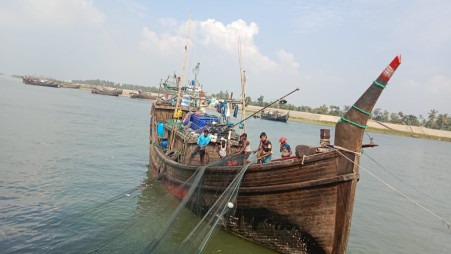
Governance, too, has blurred. NGO coordination meetings mirror municipal planning: water points, waste zones, road repairs. When pipes break in Ukhiya’s wards, the same contractors often work in the camps. When rains flood camp drains, local labour crews clear them for daily wages. The line between “refugee infrastructure” and “host infrastructure” now exists only in funding paperwork.
Hotels fill during festivals. A recycling plant hums by the canal while water points and latrines are maintained at scale by host-side engineers. Informal Rohingya workers fix tin roofs, haul goods, stitch nets, and pack seafood for Cox’s Bazar’s market chain. The local economy has quietly adjusted to depend on them, even as policy still insists on separation.
The camp economy and the host economy remain separate on paper but are joined in practice. One runs on cash and tourism; the other on vouchers and aid. Together they form a closed circuit of labour, consumption, and survival. What was once improvisation has become routine infrastructure — a district that learned, by necessity, to manage permanence.
Permanence, Softly Stated
Repatriation is not an operational premise. Paper moves, lists move, buses do not. Conflict across the border hardens that fact. Local administration adapts. Databases tighten. Periodic crackdowns expose attempts to cross into national identity systems — NIDs, passports — through forged paperwork or brokers. Each case fuels resentment. Each case also signals how long this has lasted.
“Here to stay” does not mean legal status changes; it means habits set. Children born since 2017 speak Bangla in the playground and their native dialect at home. Informal work finds the creases: carrying, cleaning, small trade. Religion and language make living side by side easier than elsewhere, even when politics say otherwise. The longer the crisis runs, the more it looks like ordinary life — constrained, but ordinary.
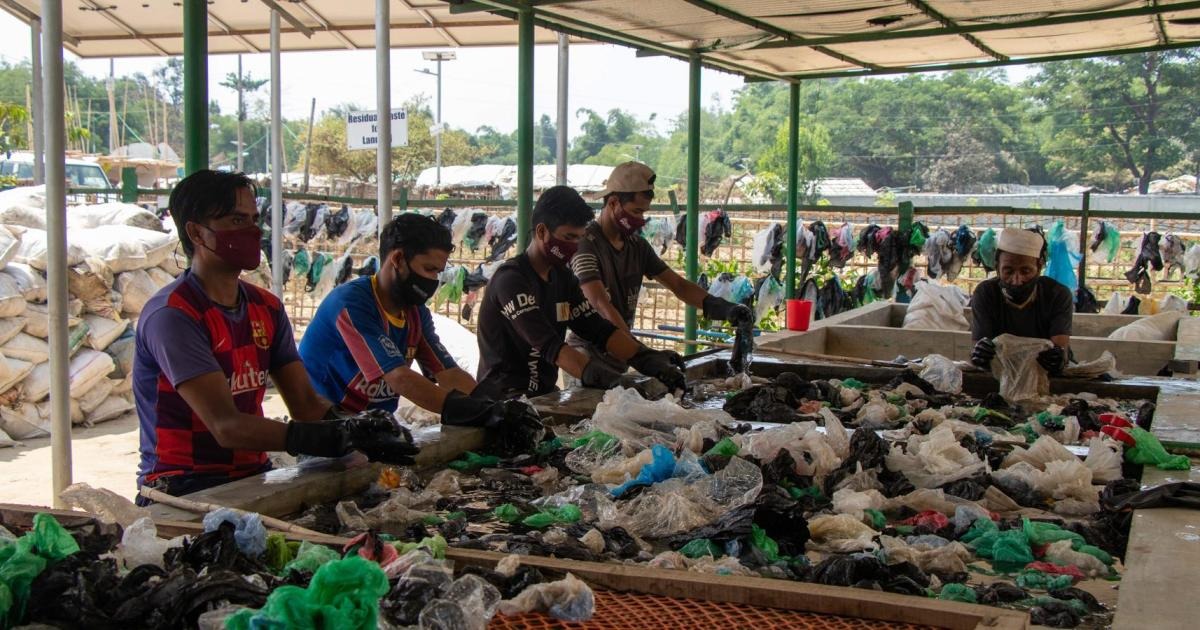
Tourism on Top of Lifelines
Cox’s Bazar runs two tracks at once. Beaches and resorts peak on holidays. Humanitarian pipelines steady the off-weeks. Service upgrades serve everyone, even if funding lines say otherwise. The town looks busy while the numbers still say strain. Holiday money is lumpy. Aid money is thin but continuous. Prices climb. Wages trail. Families adjust.
The state no longer responds; it manages. Spawning bans. Market monitoring. Small grants for ward works. Coordination cells with the aid operation. Police actions against document fraud. None of it dramatic. All of it necessary. The job is to keep the floor from cracking, not to declare an end.
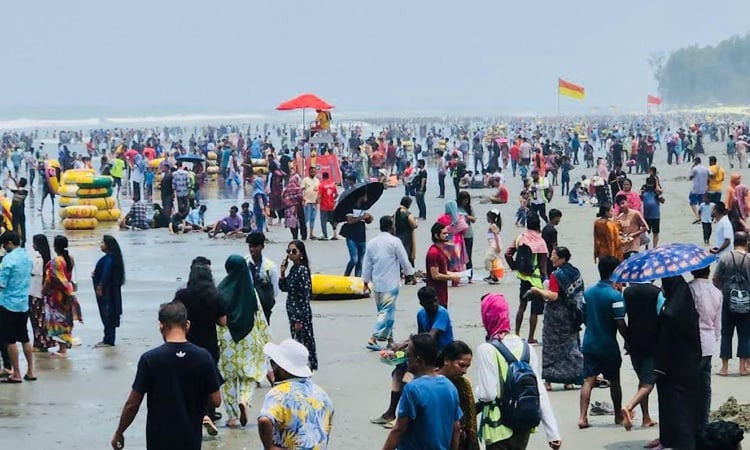
The Coastal Equation
Put the pieces together. Tourism lifts and drops. Hilsa bans pause incomes on a schedule. Rice bands hold above comfort levels. A plant takes plastic out of canals. Contractors replace a run of pipes. Health and WASH baselines cover every refugee and part of the host. Aid steadies the month just enough to avoid the worst decisions: selling tools, skipping meals, pulling a child from school.
This did not end. It settled. The coast moved from surge to baseline and stayed there. That is the equation: seasonal labour, stubborn prices, municipal increments, and humanitarian cash-in-kind that needs periodic top-ups. Talk of return remains talk. The operating reality is endurance.
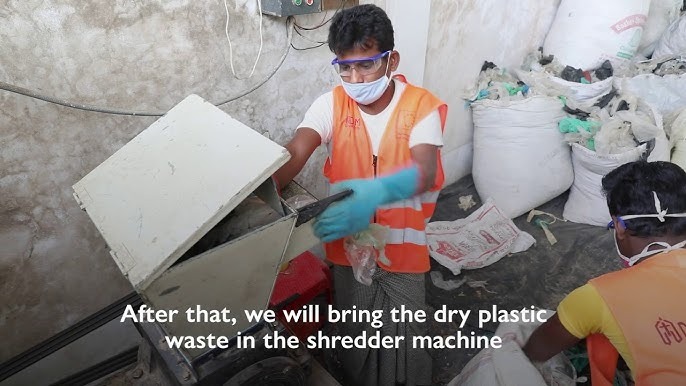
They simply stay.
What remains is management — quiet, complex, and ongoing.
References & Source Notes
- UNHCR Bangladesh Operational Data Portal – “Biometrically identified new arrivals,” updated 30 Sept 2025 → https://data.unhcr.org/en/country/bgd
- Reuters, 4 Apr 2025 – “Myanmar confirms 180,000 Rohingya refugees eligible to return, says Bangladesh.” → https://www.reuters.com/world/asia-pacific/myanmar-confirms-180000-rohingya-refugees-eligible-return-says-bangladesh-2025-04-04/
- World Food Programme Bangladesh, 3 Oct 2025 – “Japan provides US$ 3.4 million for lifesaving assistance to Rohingya refugees and host communities.” → https://www.wfp.org/news/japan-provides-us34-million-lifesaving-assistance-rohingya-refugees-and-host-communities
- Bangladesh Bureau of Statistics (CPI Bulletin, Sept 2025) – headline inflation 8.36 percent. → https://www.bb.org.bd/en/index.php/econdata/inflation
- Trading Corporation of Bangladesh (TCB) – commodity rates cross-checked from national coverage and local market reports (early Oct 2025).
- Ministry of Fisheries / BSS News, 4–25 Oct 2025 – 22-day hilsa spawning ban in Chattogram–Cox’s Bazar waters. → https://www.bssnews.net/others/317467
- Cox’s Bazar Municipality / UNOPS, 9–10 Oct 2025 – Municipal plastic-recycling plant inaugurated (jobs for women; wetland cleanup).
- World Bank Project P501274 (HREL) – procurement plan update 20 Sept 2025 (continuity of small-works contracts).
- Health Sector Cox’s Bazar Bulletins (Mar–Apr 2025) – classified as “Rohingya Refugee – Protracted Grade 2 Emergency.”
- UNHCR definition of protracted refugee situation – ≥25,000 refugees from the same country in exile for five years or more. → https://www.unhcr.org/refugee-statistics/insights/explainers/refugee-hosting-metrics.html


